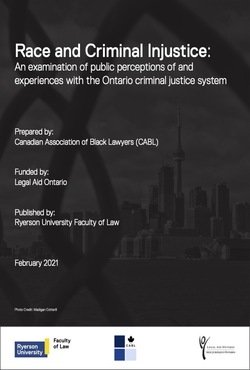By New York City Racial Justice Commission
In March 2021, Mayor de Blasio announced the formation of the Racial Justice Commission and appointed 11 Commissioners, including Chair Jennifer Jones Austin and Vice Chair Henry Garrido, to focus on racial justice and reconciliation, with a mandate to identify and root out structural racism. The Racial Justice Commission (RJC) has the formal powers of a charter revision commission, including the ability to propose changes to the NYC Charter. The NYC Charter is the foundation of how our City functions and governs, and it has a direct impact on the way we live and work. The Commission set out to examine the NYC Charter to identify barriers to power, access, and opportunity for Black, Indigenous, Latinx, Asian, Pacific Islander, Middle Eastern and all People of Color (BIPOC*) in New York City and put forward ballot proposals aimed at removing those barriers and advancing racial equity. New Yorkers will vote on these proposed changes in November 2022. The Commission operates independently from the Mayor’s Office and other agencies. As a charter revision commission, the Racial Justice Commission was tasked with reviewing the entire City Charter and proposing amendments, or changes, to be considered by voters and voted upon in a general election. A charter revision commission can choose to make proposals that change the entire charter, or a specific section. Given this authority, and the unique opportunity posed by the transformative potential of this moment in history, the Racial Justice Commission decided to focus on identifying and proposing structural changes in the NYC Charter that will advance racial justice and equity and begin to dismantle structural racism for all New Yorkers. The Commission began by defining a vision for racial equity, one where the worth, talents, and contributions of all people in society are valued and recognized, and where race is not a determinant of economic, political, social, or psychological outcomes, as it neither confers privilege nor denies opportunities.
PUBLIC ENGAGEMENT
Charter revision commissions can perform research, speak with experts and community leaders, conduct public meetings and public input sessions as they collect information and ideas, and make decisions about what proposed charter changes to recommend. Engaging New Yorkers in the process undertaken by the Racial Justice Commission was critical. While most charter revision commissions seek input and specific proposals from the public, the Racial Justice Commission knew it would be important to also recognize the deep pain of racial trauma and the history of injustices suffered. So, the Commission heard from New Yorkers not only on their ideas, but also on their experiences—the challenges faced, systemic barriers in place, and the personal and community impact these injustices have had. The Commission employed a wide range of engagement tools in order to reach the broadest range of New Yorkers as possible, with an emphasis on reaching Black, Indigenous, Latinx, Asian, Pacific Islander, Middle Eastern New Yorkers and all People of Color (BIPOC*) who are not as effectively reached through traditional government engagement vehicles. The Commission held public input sessions in every borough and online; received input online from over 1,250 New Yorkers; heard from thought leaders and experts from a range of fields, backgrounds, and expertise; spread the word to over 1,000 New Yorkers through presentations to community boards and civic groups; and conducted targeted interviews and focus groups with critical stakeholders working in racial equity and racial justice.
New York: NYC Racial Justice Commission, 2022. 147p.












